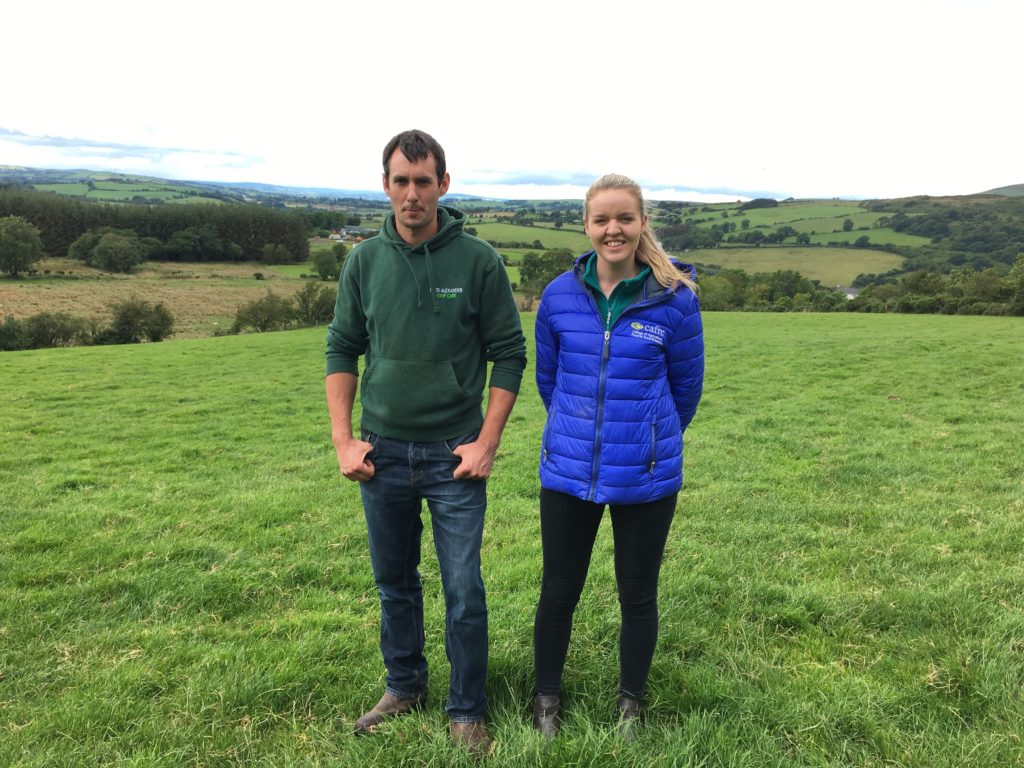Plan now to maximise grass growth
March 31, 2020
Hannah McNelis, CAFRE Beef & Sheep Adviser
After an extremely wet winter, grass growth on farms across the country has been slow to get going. With calving and lambing in full swing across beef and sheep farms, demand for grass will increase greatly in the next few weeks.
With milder weather approaching now is the time to kick start growth with targeted applications of slurry and fertiliser. Walking the farm is essential to assess grass covers and ground conditions.
Slurry is a good source of N, P and K in spring, if it is available on farm target areas of lower soil fertility and also apply to silage ground. You should also consider using trailing shoe or dribble bar technology, as AFBI research has shown that where it is used, you can significantly reduce nitrogen losses to the atmosphere and increase grass growth by up to 25%.

Hannah McNelis discussing grassland management with farmer David Alexander.
Protected urea, a newer product on the market, is also useful at this stage of the year to continue to get the benefit of straight nitrogen. A sufficient cover of grass is required when spreading urea to ensure minimal losses to the atmosphere. Compound fertiliser such as 24-6-12 with good levels of P and K are beneficial where required on silage ground or to get grazing moving ahead of stock. Consider fertiliser products including sulphur in spring up to maximum 6% inclusion. This will help to optimise the nitrogen uptake and use in the sward. Remember to always spread chemical fertiliser as per your soil analysis, at P index 3 no chemical P fertiliser is permitted.
Now is also the time to start thinking about first cut silage. Every farm may not be suitable for cutting silage in May, however all farms should aim for this date and cut at the first possible opportunity. Prioritise a block of land on the farm and close it up as soon as possible. Apply slurry and fertiliser as required and do not be tempted to graze with sheep or cattle. Early silage, cut at the correct stage will deliver good quality leafy silage of high D-value which will pay dividends for winter feeding particularly if there are young stock or finishing cattle on the farm.
Remember that in order to get the maximum from your nitrogen, apply slurry before urea leaving 7 days between applications. There is no issue with CAN or compound fertiliser when working with slurry. If lime is required on the farm, with current ground conditions aim to spread after all silage cuts have been taken and apply directly to the stubble. If there’s slurry to be spread at this time, apply the slurry first and the lime second.
In the current COVID-19 situation plan ahead with your suppliers for fertiliser and other inputs required on the farm but there is no need to panic buy. Also continue to maintain social distancing from all visitors to the farm including meal suppliers and contractors and continue to practice good hand washing.
